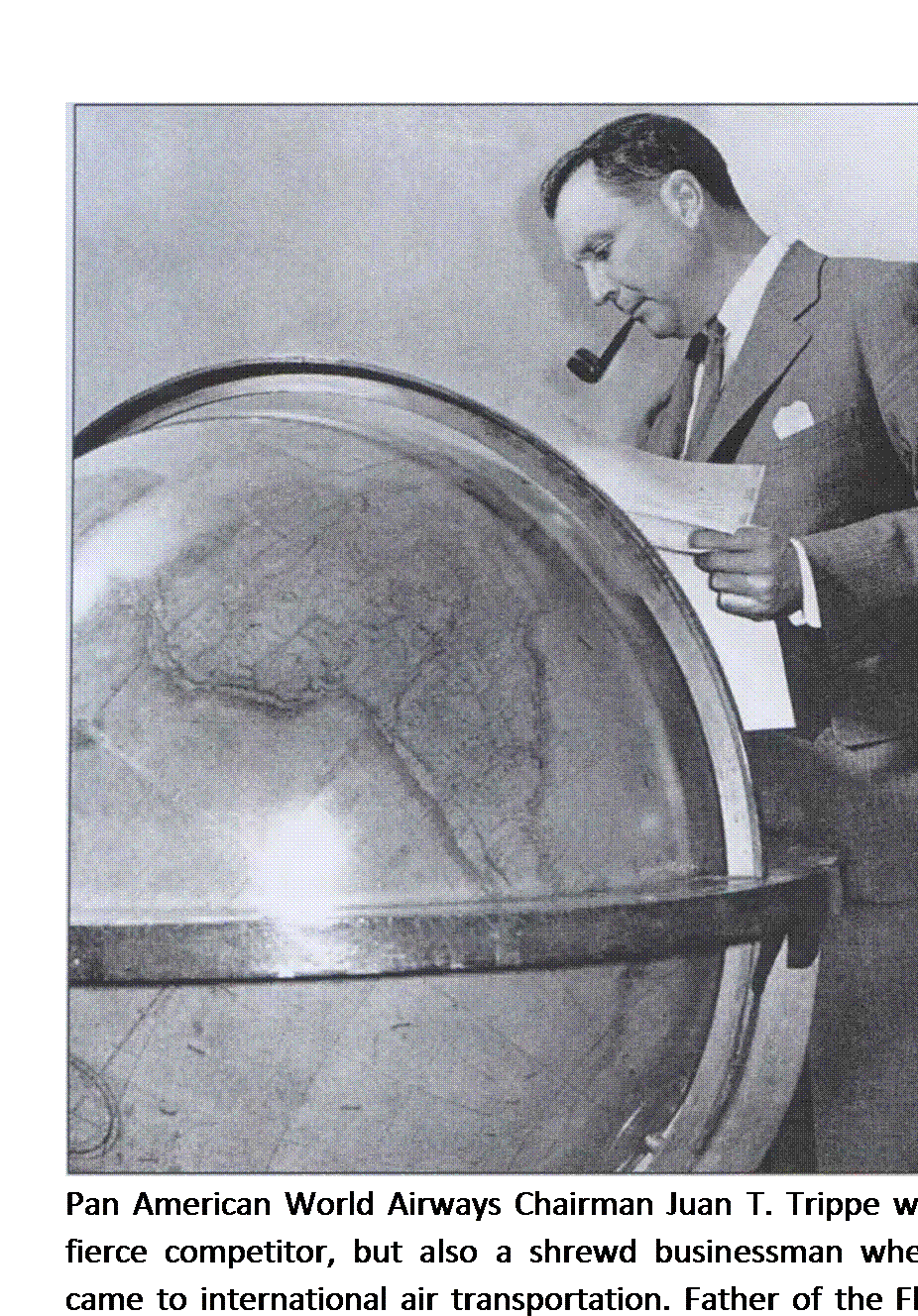Juan Trippe, Pan American
A Yale graduate, Juan Terry Trippe was always thinking of aviation. His first venture was Long Island Airways from 1923 to 1925, and then The Aviation Corporation of America. In what would become his hallmark operating style, Trippe became a manager of mergers, appending one airline after another to the core airline (which in 1931 officially became Pan American Airways). That airline started in the Caribbean, then expanded into Mexico, then South America, Latin America, the Atlantic, and finally China and the Pacific. Often thought of as “determined,” Trippe also had a reputation for sometimes being a bit unethical. However, the end results always favored his airline, Pan American.
Juan Trippe was a very patient man. If he wanted something he’d be willing to wait to get it but all the while wearing down his intended target until finally, he or they gave in. Trippe also learned early-on how to work within the system, a necessity since overseas route authority was granted by the government. Trippe’s influence was a constantly growing entity, and his vision for his airline was that of the sole U. S. Flag Carrier, or “The Chosen Instrument” to project America’s greatness. But no matter how he achieved his goals, Pan American was indeed the undisputed premier international airline in the world.

Pan American Airways flew to most of its destinations as the first airline ever to do so. When one is the pioneer, one quickly learns that everything must be built from scratch. The airline was renowned for its engineering prowess, and its navigational equipment was the leader in its field. Becoming and maintaining a rating as a Pan American airline pilot or navigator (pilots had to be proficient at both jobs) was governed by the strictest of standards and proficiency levels. Pan American was able to strike out into completely uncharted territory and build by hand a transoceanic airline, its 1935 Transpacific island service being the prime example. (Remember always the beautiful China Clippers and their siblings.)
Pan American was an airline of firsts too numerous to mention here; suffice it to say that when one thinks of the romance and intrigue of girdling the planet in an airplane in those early days, and taking two weeks to do so, only one airline name comes to mind: Pan American World Airways. Among his countless accomplishments, Juan Trippe would also have to be considered “the father of the modern jet airliner,” placing the historic launch order for Boeing’s new 707 in 1955, and then again in 1966 for the world’s first Jumbo Jet, the Boeing 747. Juan Trippe retired as CEO in 1968 and left the board in 1975. He guided and shaped his beloved and historic company for nearly half a century, and what a half century it was!











